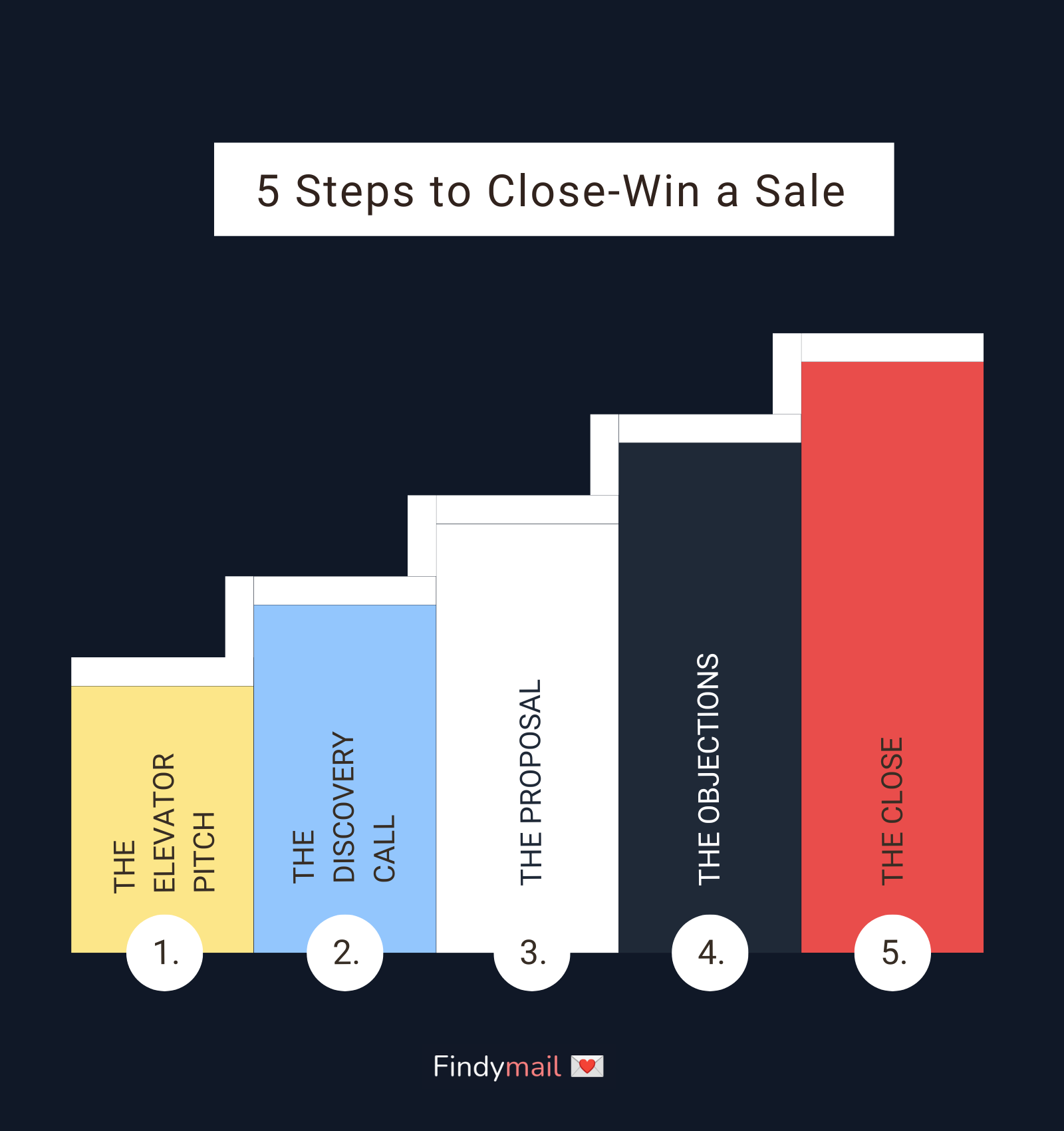Sales is all about closing the deal. But what does it take to actually seal the deal? In this blog post, we'll explore what it means to close a deal from qualifying your leads to following up after a sale.
And what does "Closed Won" even mean in sales?
spoiler: It's actually simple. "Closed Won" is simply a common term to refer to a deal closed successfully.
Define what a "win" is in sales.
Qualify your leads to increase your chances of winning
In sales, a "win" is defined as successfully closing a deal with a prospect. To increase your chances of winning, it's important that you qualify your leads before attempting to close a sale.
This means that you should only attempt to sell to those who are actually interested in your product or service, and who have the budget to purchase it.
By qualifying your leads beforehand, you'll be able to focus your energy on those who are most likely to convert.
Qualifying requires you to understand what's the ideal audience for your product/service and make adequate research when prospecting to make sure the people you are talking with ARE in that ideal audience.
You can't guess everything from research though, that's why a discovery call comes in handy to do deeper qualification: you'll have the chance to ask more thorough questions before doing any demo.
The psychology of a win.
The importance of a positive mindset
When it comes to sales, your mindset matters just as much as your skillset. If you don't believe in yourself, it will be difficult to convince others to do business with you. That's why it's so important to have a positive outlook and maintain a high level of confidence, even when the going gets tough.
One way to keep your spirits up is by setting small goals and celebrating each time you reach one. This will help you stay motivated and focused on the larger prize. Additionally, try to learn from your losses and use them as opportunities to improve your strategies. With the right attitude, you'll be well on your way to closing more sales and achieving greater success in your career.
The steps to take to close a sale.

The elevator pitch
The first step in closing a sale is the elevator pitch, which is a brief summary of what you're selling and why the customer should buy it. This is your chance to make a good first impression and explain what makes your product or service unique. It's important to keep the elevator pitch short and to the point, so that the customer doesn't get bored or lost in the explanation.
Think of your elevator pitch as your value proposition on steroids.
The discovery call
After the initial contact has been made, it's time for a discovery call. This is an opportunity to learn more about the customer's needs and see if there is a fit between what they need and what you're selling.
It's also an opportunity to build rapport and trust with the customer. During the discovery call, be sure to ask open-ended questions and listen carefully to the answers. Don't be afraid to dig deeper with follow-up questions such as "Why ?" "So what?"
The proposal
Once you've determined that there is a fit between what the customer needs and what you're selling, it's time to put together a proposal. The proposal should be tailored specifically to the customer's needs, so that they can see how your product or service will solve their problem.
Be sure to include all of the relevant information in the proposal, such as pricing, delivery timelines, etc., so that there are no surprises later on. If you're selling, the proposal step can also be/include a product demo.
Important: You should be on this step only if it's a fit based on the discovery call!
Objections and how to overcome them
The most common objections that salespeople face are around price, timing, and fit.
When you're faced with an objection, the best thing to do is to address it head-on. Thank the customer for bringing it up, and then ask if you can help them understand the issue better. Once you've done that, you can provide more information that will help to address their concerns.
The close
The close is when you actually ask for the sale. This can be done in many different ways, but it's important to be clear and direct when making this request. Be confident in your product or service and believe that it is the best solution for the customer's needs.
If you have any objections from the customer at this point, address them head-on and try to overcome them with logic and reasoning.
Following up after a sale.
The thank-you
After you've closed a sale, the first step is to send a thank-you. This shows your client that you appreciate their business, and it helps to solidify the relationship. A thank-you can be as simple as a handwritten note, or an email with a personal message.
The check-in
The next step is to stay in touch with your client and check in on how they're doing. This can be done via email, phone, or even social media. Checking in shows that you care about your clients and want to make sure they're happy with what they've purchased. It also gives you an opportunity to upsell or cross-sell additional products or services.
Closing a sale is just the beginning of the journey - it's important to follow up after the sale is made in order to turn a one-time buyer into a lifelong customer. By sending a thank-you and staying in touch, you can build strong relationships with your clients that will last for years to come.
Conclusion
A win in sales is defined as the successful completion of a sale. In order to increase the chances of winning, it is important to qualify your leads. The psychology of a win is just as important as the steps you take to close a sale. A positive mindset is key to success.
The steps to closing a sale are the elevator pitch, the discovery call, the proposal, and the close. Following up after a sale is just as important as the sale itself. The thank-you and check-in are both essential parts of following up. In conclusion, remember that a win in sales requires definition, preparation, positivity, and follow-through.






